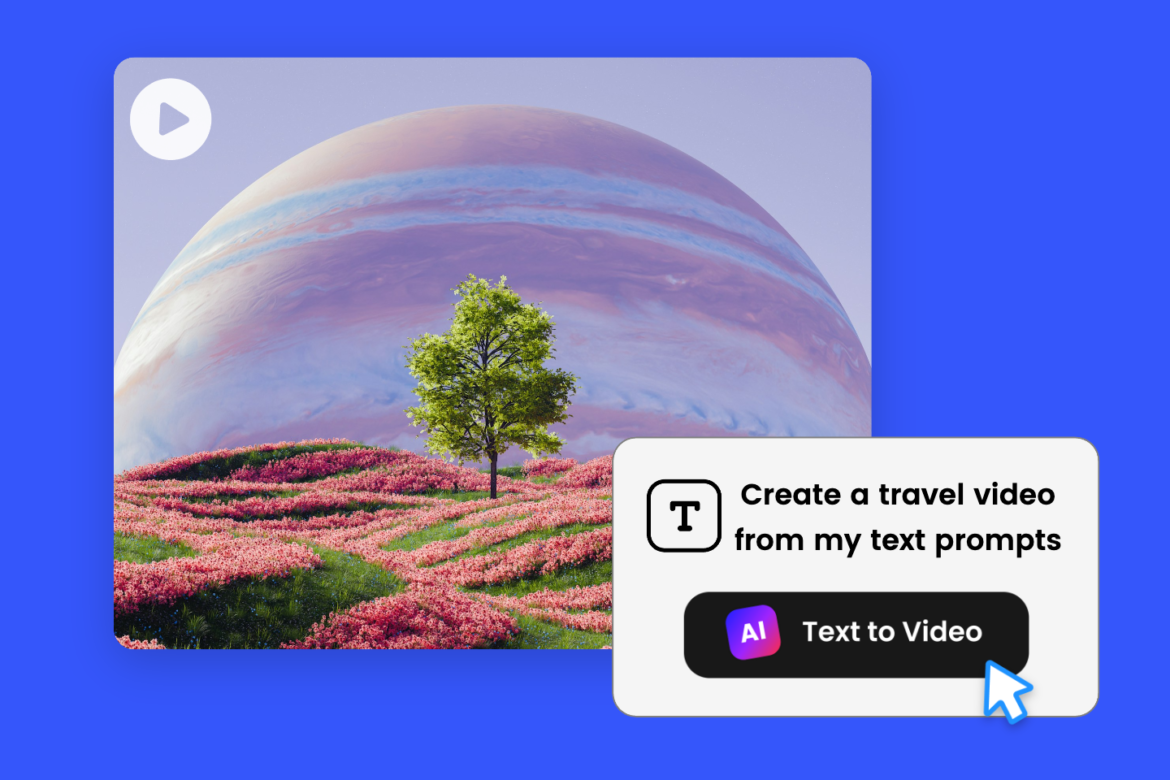
The landscape of content creation is undergoing a massive transformation, driven by the advent of innovative technologies. Among these, text-to-video technology stands out as a game-changer, revolutionizing how content is produced and consumed. This technology allows users to generate videos from simple text inputs, making video production more accessible and efficient than ever before. As we look toward the future, it’s clear that text-to-video will play a pivotal role in shaping the content creation industry.
Democratizing Video Production
Traditionally, video production has been a resource-intensive process, requiring specialized skills, equipment, and significant time investment. However, text-to-video technology is democratizing this space, enabling anyone with a basic understanding of content creation to produce high-quality videos. Whether you’re a small business owner, a marketer, or an individual creator, text-to-video tools empower you to create engaging content without needing a professional videographer. This democratization is leveling the playing field, allowing more voices to be heard in the digital space.
Accelerating Content Creation
In today’s fast-paced digital world, the ability to produce content quickly is crucial. AI text-to-video technology accelerates the content creation process by automating many of the steps involved in video production. By simply inputting text, users can generate scripts, select visuals, add background music, and even apply voiceovers within minutes. This efficiency not only saves time but also enables creators to keep up with the ever-growing demand for fresh and relevant content. As a result, businesses and individuals can maintain a consistent online presence without being bogged down by lengthy production timelines.
Enhancing Creativity and Flexibility
One of the most exciting aspects of text-to-video technology is its ability to enhance creativity. While some may fear that automation stifles creativity, the opposite is often true. By handling the technical aspects of video production, text-to-video tools free creators to focus on the creative aspects of their content. Users can experiment with different styles, formats, and narratives without being limited by technical constraints. Moreover, these tools offer flexibility in content creation, allowing for quick revisions and adjustments to cater to different audiences or platforms.
Expanding Content Accessibility
As the global audience becomes increasingly diverse, the need for accessible content is more important than ever. Text-to-video technology plays a significant role in making content more accessible to a wider audience. For instance, videos can be automatically generated in multiple languages, ensuring that language barriers do not prevent users from engaging with the content. Additionally, the ability to add captions and subtitles enhances accessibility for individuals with hearing impairments. By making content more inclusive, text-to-video technology is helping brands and creators reach a broader and more diverse audience.
Enhancing Engagement and Retention
Video content is known for its ability to capture and retain viewers’ attention better than other forms of content. Text-to-video technology enhances this engagement by making it easier to produce dynamic and visually appealing videos. Artificial intelligence apps, particularly those focused on text-to-video tools, are revolutionizing how we create videos. Whether it’s a product demonstration, a tutorial, or a storytelling piece, videos created with these AI-driven tools are more likely to engage viewers and keep them invested in the content. This increased engagement translates to better retention rates, which is crucial for brands looking to build long-term relationships with their audience.
Improving SEO and Online Visibility
In the digital age, visibility is key to success, and video content is one of the most effective ways to improve search engine optimization (SEO). Text-to-video technology contributes to this by enabling the rapid creation of video content that can be optimized for search engines. Videos can be embedded with keywords, tags, and descriptions that enhance their discoverability on platforms like YouTube and Google. Additionally, the shareability of video content on social media further amplifies its reach, driving more traffic to websites and boosting overall online visibility.
Bridging the Gap Between Text and Video
Text and video have traditionally been seen as separate forms of content, each with its own strengths and limitations. However, text-to-video technology is bridging the gap between these two mediums, allowing for seamless integration. This convergence enables creators to repurpose text-based content, such as blog posts or articles, into engaging video formats. As a result, businesses can maximize the value of their existing content while catering to the growing preference for video consumption. This synergy between text and video is a testament to the versatility and adaptability of content in the digital age.
Facilitating Data-Driven Content Creation
The future of content creation is increasingly data-driven, with insights and analytics playing a crucial role in shaping content strategies. Text-to-video technology facilitates this by providing data on how different video elements—such as visuals, audio, and pacing—impact viewer engagement. These insights enable creators to optimize their videos for better performance, ensuring that content resonates with the target audience. Moreover, the ability to quickly test and iterate on different video formats allows for more informed decision-making in content creation.
Supporting Personalized Content Experiences
Personalization is a growing trend in content marketing, and text-to-video technology is well-positioned to support this demand. By leveraging data on user preferences and behaviors, creators can generate personalized video content that speaks directly to individual viewers. Whether it’s tailored product recommendations, personalized tutorials, or customized messages, text-to-video tools enable brands to deliver more relevant and impactful content. This personalized approach not only enhances the viewer experience but also strengthens brand loyalty and engagement.
Shaping the Future of Content Creation
As we look to the future, it’s clear that text-to-video technology will continue to shape the content creation landscape in profound ways. Its ability to democratize video production, accelerate content creation, and enhance engagement makes it an indispensable tool for creators and businesses alike. Moreover, its potential to drive innovation in areas such as accessibility, personalization, and data-driven content creation ensures that it will remain at the forefront of digital content strategies. With the rise of versatile tools, including video apps for Android, text-to-video technology will undoubtedly play a central role in defining the future of content creation.
Conclusion
In conclusion, text-to-video technology is revolutionizing the way content is created and consumed. By making video production more accessible, efficient, and creative, it is empowering a new generation of content creators. As this technology continues to evolve, it will open up even more possibilities for innovation and growth in the content creation industry. For businesses and creators looking to stay ahead in the digital age, embracing text-to-video technology is not just an option—it’s a necessity. The future of content creation is here, and it is being shaped by the power of text-to-video.


